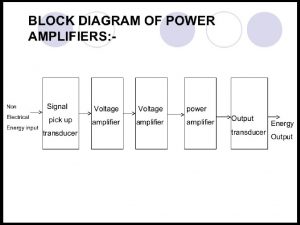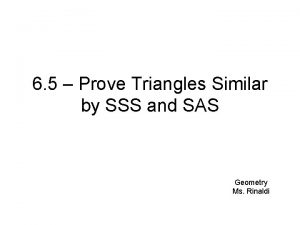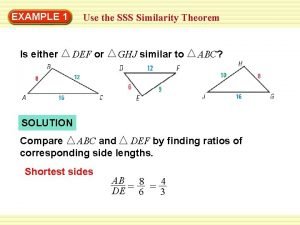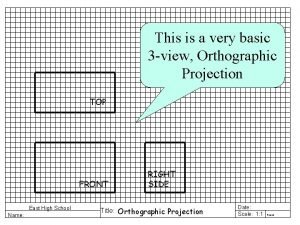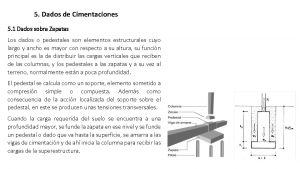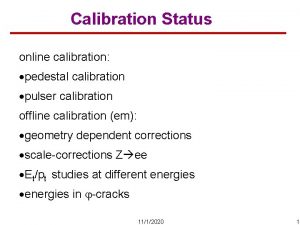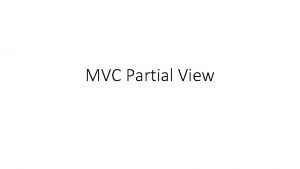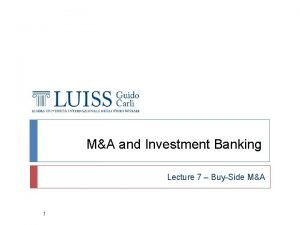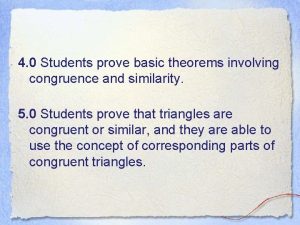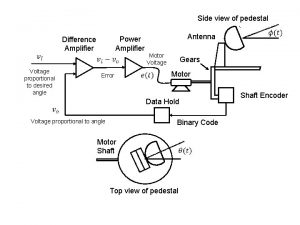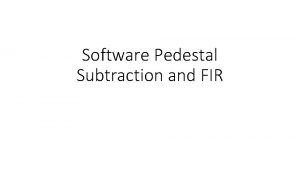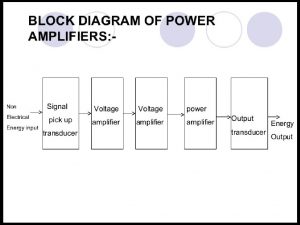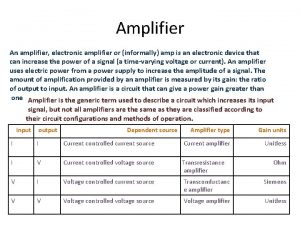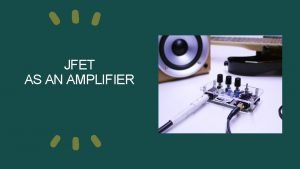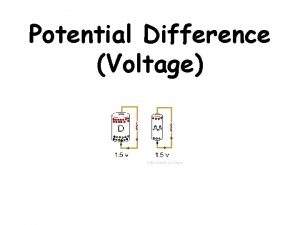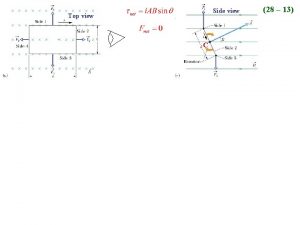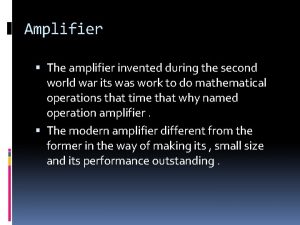Side view of pedestal Power Amplifier Difference Amplifier
















- Slides: 16

Side view of pedestal Power Amplifier Difference Amplifier Voltage proportional to desired angle Error Antenna Motor Voltage proportional to angle Motor Binary Code Motor Shaft Gears Data Hold ` Top view of pedestal Shaft Encoder

Power Amplifier Motor/antenna Input Gain + - Sensor Power Amplifier Motor/antenna Input Gain 0. 04 + - 0. 04 Sensor

Power Amplifier Motor/antenna Input Gain 0. 04 + - Sensor + - Amplifier & Thrusters Thruster Satellite Torque Sensor Thruster

+ + © Copyright Paul Oh

+ - + - + + © Copyright Paul Oh

+ - + + © Copyright Paul Oh

+ - Compensator Sensor © Copyright Paul Oh

+ + © Copyright Paul Oh

Block Diagrams Definition: A block diagram of a system is a pictorial representation of the functions performed by each component and of the flow of signals • All system variables are linked to each other thru functional blocks • Functional block (or simply blocks) is a symbol for the mathematical operation on the input signal to the block that produces the output • The transfer function of a component is usually entered in the block • Blocks are connected by arrows to indicate signal flow • Dimensions of the output signal from the block are the dimensions of the input multiplied by the dimensions of the transfer function in that block © Copyright Paul Oh

Block Diagram of a Closed Loop system + - Or, pictorially have © Copyright Paul Oh

Open-Loop Transfer Function (OLTF) + - Additionally Hence Feed-Forward Transfer Function (FFTF) © Copyright Paul Oh

Closed-Loop Transfer Function (CLTF) + - Or, pictorially have © Copyright Paul Oh

Transfer Function of Cascaded Elements Or, pictorially have • Assumes input impedance second element is infinite • Assumes output of first element is not affected by connecting to second element • Transfer function of whole systems is thus product of the transfer functions of the individual elements © Copyright Paul Oh

Example: Kuo p. 105 Example: Simplify the block diagram shown below + + - + Solution: Step 1: Look for parallel blocks to simplify structures + - + + © Copyright Paul Oh

Example: Kuo p. 105 Step 2 Recognize closed-loop relationships + - Factoring, have Alternatively + Alternatively + © Copyright Paul Oh

Example: Kuo p. 105 Step 3 Combine blocks + - + + Final Answer © Copyright Paul Oh
 Difference between voltage and current
Difference between voltage and current Side side side similarity
Side side side similarity Sas similarity theorem
Sas similarity theorem Sss similarity theorem
Sss similarity theorem Angle-angle similarity
Angle-angle similarity The top view is directly above the right side view
The top view is directly above the right side view Pedestal de cimentacion
Pedestal de cimentacion Tipos de desagües
Tipos de desagües Pedestal correction
Pedestal correction Worms eye view camera shot
Worms eye view camera shot Difference between view and partial view in mvc
Difference between view and partial view in mvc Active power reactive power apparent power
Active power reactive power apparent power Perfect competition side by side graphs
Perfect competition side by side graphs Tea uil side by side
Tea uil side by side Sell side vs buy side
Sell side vs buy side Soda lime uses
Soda lime uses Smtyk
Smtyk
